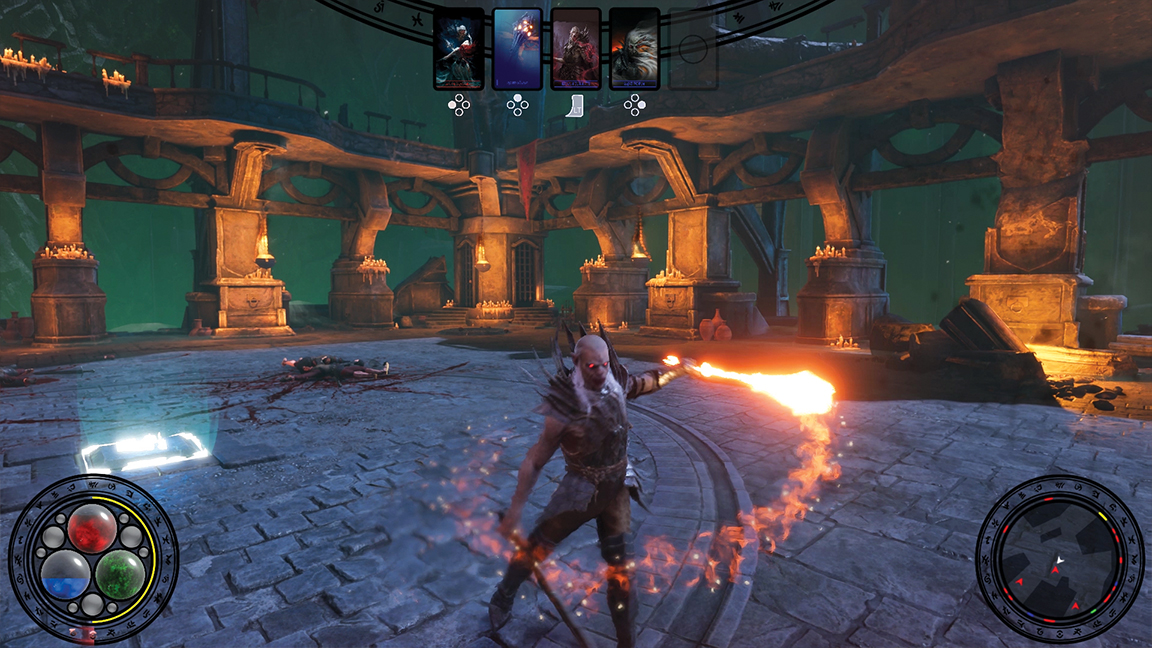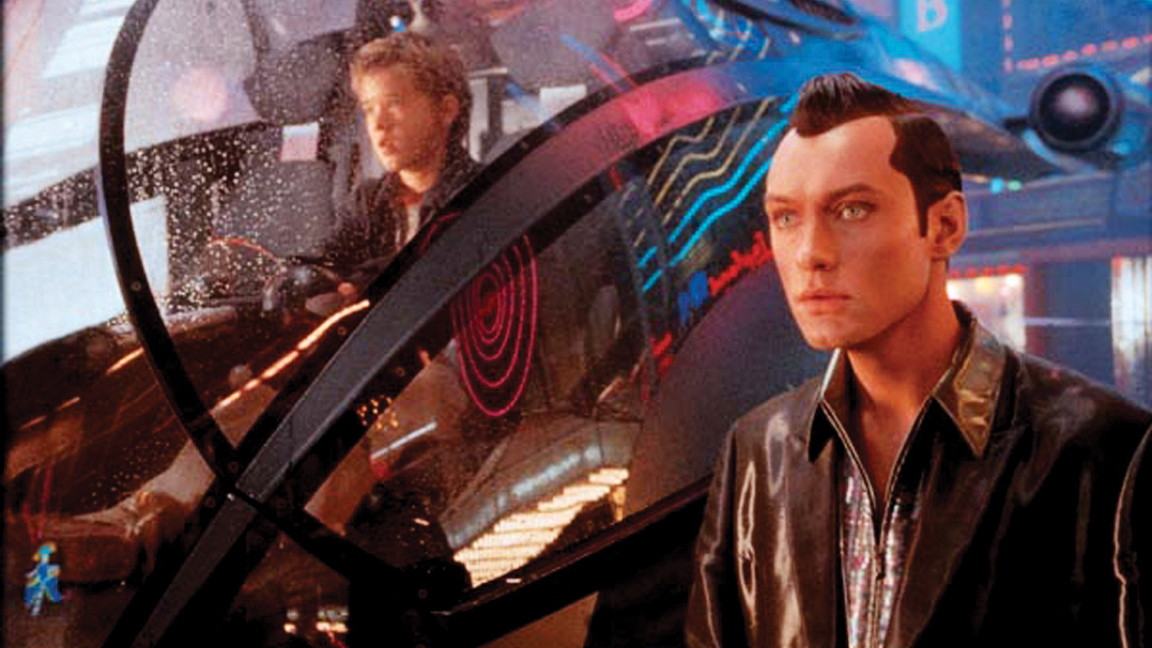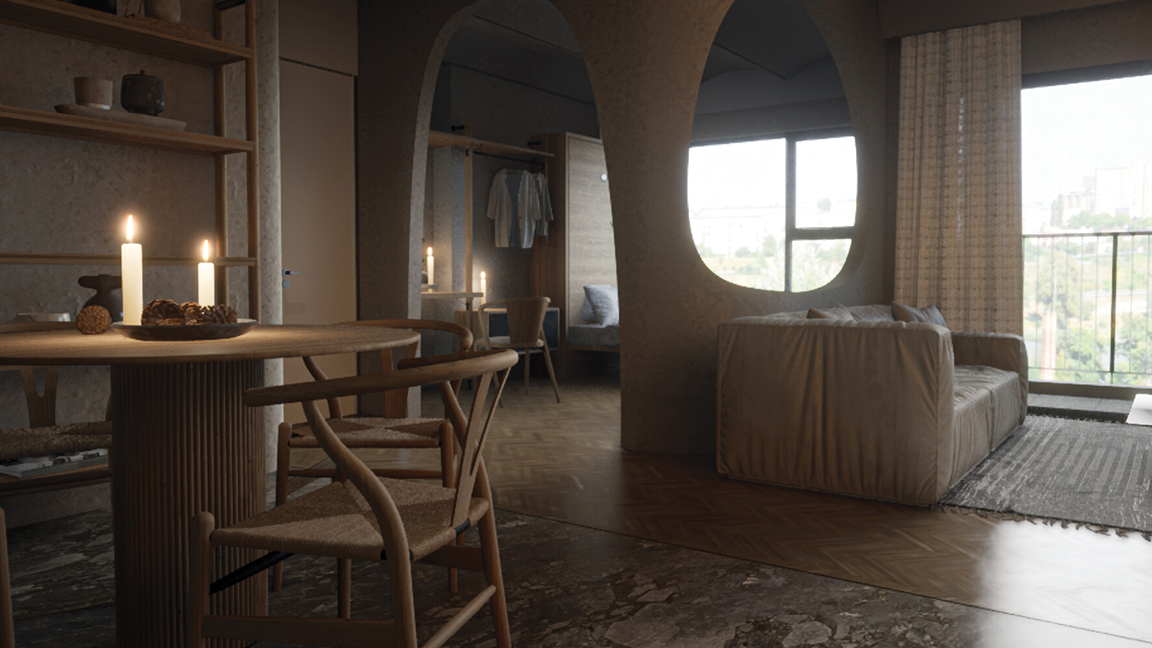Are game engines the future of 3D art?
Whether it's Unreal Engine 5 or Unity, game engines are taking over 3D art.

The rise in popularity of game engines like Unreal Engine 5 and Unity is the latest seismic shift in the world of 3D visualisation, and it's the biggest development in decades.
First up were still images, quickly followed by videos and interactive experiences hot on their heels. For most of this evolution, 3D artists have been supported by a range of traditional 3D packages including 3ds Max, Maya and Cinema 4D as well as renderers such as Mental Ray, V-Ray and OctaneRender.
The latest shift has seen a move away from these applications and towards game engines. Unity, Unreal Engine (UE) and CryEngine have been around for a long while but have largely occupied the games market alone. Unreal Engine, for example, was birthed out of the first game that was developed with it, Unreal in 1998. A couple of years prior to that, Quake Engine released its debut game, Quake. These were exciting days of development and advance, but it didn’t touch other industries.
It has only been in recent years that we’ve seen a substantial uptake of 3D artists using these engines for 3D visualisation. This has coincided with the creators of these engines broadening their horizons so that film, games and architecture industries that were historically very independent fields could become more closely integrated. Read our feature, Unity versus Unreal Engine to discover how the leading game engines match up.
The rise of game engines

CEO of Epic Games, Tim Sweeney, has been on a mission to draw together, in particular, video game and film industries. His vision is to see them mesh together, creating a common and unified vision but also a united set of tools that drive multiple creative industries towards a unified goal.
Previously, these industries needed specific, independent tools to support their needs, but it is now possible for artists and filmmakers to achieve the same results, and more, with game engines at the heart of the process. This vision is becoming an increasing reality with it now possible to create both a game and film of the same title using a single engine to produce the two.
To understand the 3D art industry’s direction of travel, let’s first take a look at film and then at architectural visualisation. In crude terms, films were split into two different types. First, those created with cameras and second, those created with computers. The latter has largely relied on off-the-shelf modelling packages as well as proprietary software developed to create a specific type of look.
Daily design news, reviews, how-tos and more, as picked by the editors.

We then started seeing filmmakers adopt a hybrid approach, making use of technology in ways never seen before. A notable example was over 20 years ago when Steven Spielberg used a game engine in his film A.I. Artificial Intelligence. Utilising an Unreal Tournament mod, Spielberg was able to plan scenes out using a virtual copy of the Rouge City made inside the game. More recently, Jon Favreau has made use of UE for The Mandalorian, and Orca Studios for Westworld.
Communications director at Epic Games, Dana Cowley, says “We’re seeing a creative reawakening in filmmaking” and it’s evidenced by the uptake we’ve seen across the film industry. Film sets are unrecognisable from what they were even a decade ago. Technology is driving new ways to create, and game engines are striving to be at the forefront of it all.
The achievements of these big names may seem insurmountable for your average 3D artist, with their million dollar budgets and some of the top technical and creative talent in the world at their disposal. But rather than discourage creatives, these achievements should give us an insight into some of the possibilities. As artists, we just need to work out how to apply these new techniques into our contexts to achieve our goals.
The workflows adopted by these studios can be broken down into a few simple steps, making it eminently achievable. For those starting out, the best advice would be to start simple. Pick a scene with simple lights and basic materials. Test your normal workflow out, and once you’ve achieved in the game engine what you were achieving with traditional Digital Content Creation (DCC) applications, move onto exploring other creative possibilities for presenting your work.

Aside from film, the architectural visualisation industry has seen increasing numbers of studios and individuals making use of game engines to visualise their projects. Offline rendering of projects has increasingly been replaced by real-time rendering solutions. We’re now seeing artists take that to a whole new level with projects being fully visualised in a real-time gaming environment.
The likes of Zaha Hadid Architects and Foster + Partners have integrated UE strongly into their workflow and, as is so often the case, wherever the big guns go, the rest follow. The technology offered by gaming engines is perfect for making collaborative working possible, particularly as it pertains to reviewing ideas and designs. Holland Basham Architects has been particularly proactive in this area, making use of Unity Reflect Review to engage with its clients and stakeholders.
Tools such as Adobe Substance Painter are becoming increasingly integrated into artists’ texturing workflows
Artists who work in film, product design and architectural visualisation will find game engines such as Unity and Unreal Engine more fine-tuned than ever. This is clear in Unreal Engine 5 where artists can import from a huge range of DCCs including 3ds Max, Rhino and Cinema 4D. That’s not the end of the journey though. Using UE’s Datasmith, artists are given a live link so that any change made in the DCC application is automatically replicated in UE. This seamless link between modelling and visualising makes it easy to integrate UE into your workflow. Unity adopts a similar workflow with its MeshSync feature.
Tools such as Adobe Substance Painter are becoming increasingly integrated into artists’ texturing workflows. These types of applications are not just usable for offline rendering, but also work well when a game engine is at the heart of the visualisation process. This is particularly straightforward in Unity with artists able to send assets straight from its Editor over to Substance Painter for texturing. A live link is maintained in the process with the asset automatically updating in Unity. Live links make it possible to use ground-breaking external applications that are tailored to specific elements of your workflow.
CryEngine is another engine that is making every effort to target the architectural visualisation market. It is doing this by offering bespoke tools that are useful for this industry specifically, with a notable mention for how easy it is to render walkthroughs on the fly.

As easy as these game engines are trying to make it, the reality is that there is still a pretty steep learning curve to getting started, let alone getting to the point where you can use one in a production context. Some elements of the creative process take longer when gaming engines are involved, most notably in relation to model optimisation and texturing.
Artists who render offline with traditional software and good hardware have little reason to keep their scenes optimised. This couldn’t be further from the case for real-time game engines. Assets must be created with the end use in mind, something that is much easier to do if you know the exact tools you’ll be using in a particular workflow.
Aside from getting the workflow right, there is then the big task of learning a whole new piece of software. If you’re looking for an easy way in then consider Unity or even CryEngine, as the learning curve for these is not as steep as Unreal Engine. Some users do report that CryEngine lacks the necessary documentation for new users, and the age-old debate of which is better, Unity or UE, will roll on for decades to come, so it’s worth doing your research before you hitch your cart to any of them.

Virtual reality (VR) is an exciting and growing market in games and architectural visualisation. All of the major engines offer VR capabilities, but the technology is still very much in its infancy. VR headsets have been around for a number of years now but these still haven’t found wholesale adoption, largely due to hardware costs and software limitations. (Read our PSVR 2 review for the latest hardware.)
Over time we’ll see a growing number of best practices develop, which will provide a firmer foundation for building upon. It seems that VR will only become a viable presentation tool for artists if the majority of the public are prepared to significantly adjust their attitude towards how they experience the world. The use of these platforms can mean you don't need an expensive workstation too, but the best laptops for gaming will often be just as good.
The world of visualisation, games and film is changing, and rapidly. Game engines that have been around for a long while are vying for increasing market share across a range of industries. With hardware continuing to improve and software becoming more powerful, it’s hard to see the future being anything other than game engines.
This article was originally published in issue 292 of 3D World Magazine. You can subscribe to 3D World at the Magazines Direct website and get 3 issues for £3. The magazine ships internationally.
Read more:
- The best CG scattering tools for 3D artists
- Unreal Engine 5: how to level up your characters
- Building a 3D virtual studio in Unity

Paul is a digital expert. In the 20 years since he graduated with a first-class honours degree in Computer Science, Paul has been actively involved in a variety of different tech and creative industries that make him the go-to guy for reviews, opinion pieces, and featured articles. With a particular love of all things visual, including photography, videography, and 3D visualisation Paul is never far from a camera or other piece of tech that gets his creative juices going. You'll also find his writing in other places, including Creative Bloq, Digital Camera World, and 3D World Magazine.
